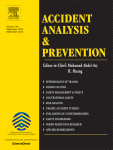
The objective of this research is to exploit high resolution driving behavior data collected via sensors of smartphones from 303 drivers in order to examine driver behavior at road segment and junction level. These sensor data are combined with traffic and road geometry characteristics and subsequently depicted spatially using Geographical Information System software. Events of harsh driver behavior (8592 harsh accelerations and 3946 harsh brakings) were mapped to delimited segments and junctions of two urban expressways in Athens, Greece. For the analysis, two multiple linear regression models and two log-linear regression models were developed. Results indicate that in road segments there is an increase in the number of harsh events if average traffic flow per lane increases in the respective areas. Furthermore, as the average occupancy increases in junctions, there is an increase in harsh accelerations, and as the average speed increases, more harsh deceleration events occur. It is evident that traffic characteristics (traffic flow & speed) have the most statistically significant impact on the frequency of harsh events compared to factors related to road geometry and driver behavior.
| ID | pj179 |
| Manuscript | |
| DOI | |
| Tags | driver behaviour, naturalistic driving, road infrastructure, telematics, traffic management |







